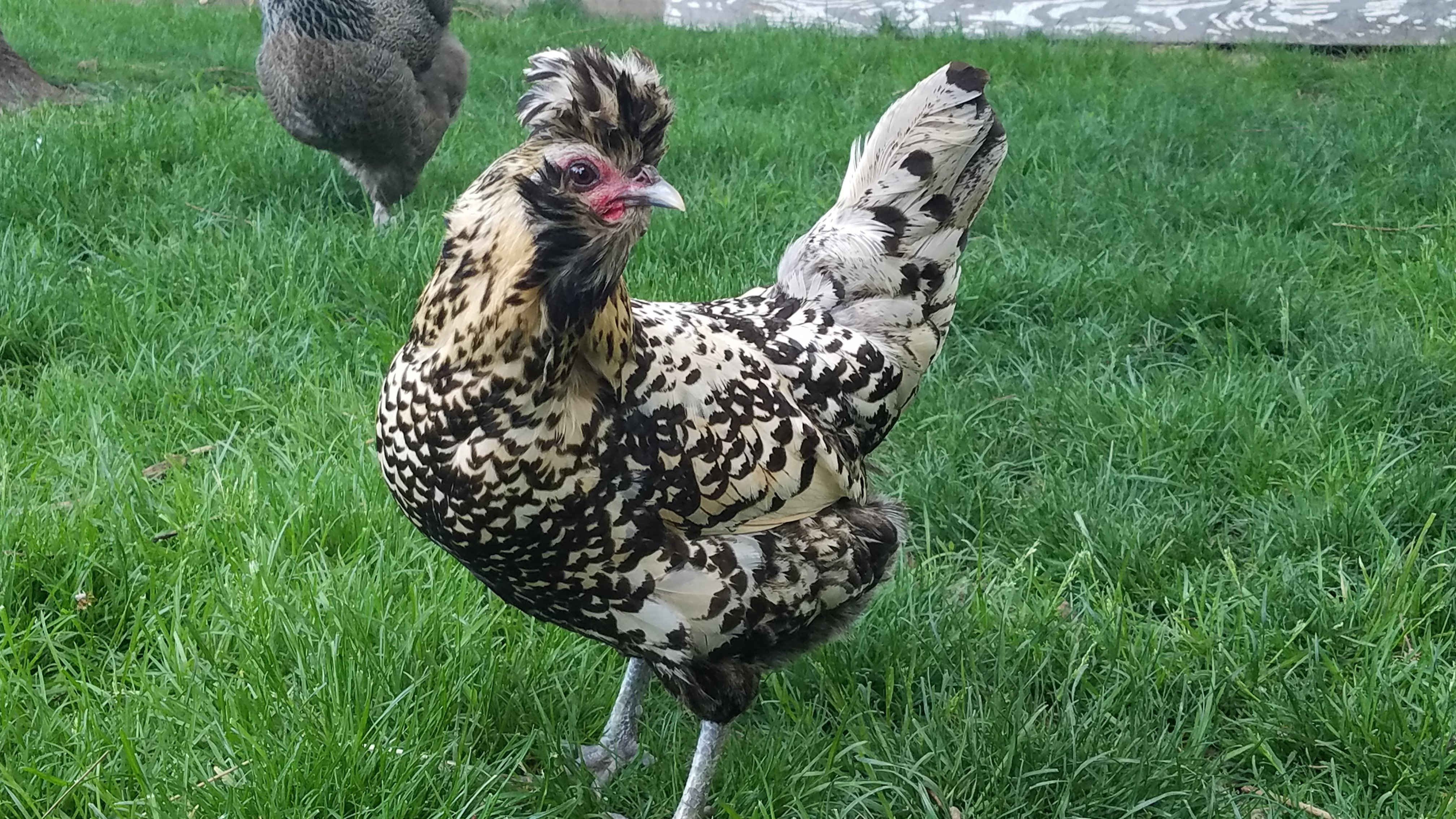14
Caring for Sentinel Chicken flocks, how can I maximize their quality of life? - SLRPNK
slrpnk.netThese chickens are kept to give blood samples each week to monitor for mosquito
born illnesses in the community. They have a very important job to do! The
department has taken the “lowest common denominator” approach to standard of
care. Most of the chickens are pecked nearly featherless with visible signs of
poor health. “They’re just chickens”, “the coop is gross” “I just go in to feed
them”, ect. I’m no expert, but this isn’t right. I’ve lost a lot of respect for
my coworkers, they aren’t reliable sources of information on care.
Coop has a dirt floor, with 2-3 inches of straw bedding. Soil was hard packed
before intense raking. Roughly 200sqft. They are fed Nutrena Country Feeds 16%
pellets in the feeder pictured below. When I visit, I give them a cup of the wet
pellets mixed with one of their eggs (I was told this is great for them?). I am
allowed to visit my girls for 30 minutes, every Monday, Wednesday and Friday. I
let coop #1 forage in a fenced area while I clean their coop, but coop #2
cannot. They are located deep in the woods, with no clear area I could watch
them. What can I do to give my girls the best possible life while they work for
science? My department only provides feed and straw, everything else is my
personal funds.
So far I’ve added bedding, supplement their diet with foraged invasive plant
species (from a safe source) and meal worm treats, hang cabbage heads to
entertain, and brought in novel objects for them to perch around on. The coop
not featured has a “merry go round” I’ve made out of a bike wheel.
How often (and how) should I clean the coop? Right now, I dig a hole in the
floor and bury all the roost poop, then rake all the bedding into a pile to
redistribute. I use a hose to wash out their water bowl and poop from any hard
surfaces. Is leash training a genuine option for life enrichment? The harness
fits, but it makes them SPRINT. Any and all advice is GREATLY appreciated, thank
you all so much :)
Attempted Cross post



Are they really featherless or are they going through a molt? Chickens molt regularly and can look pretty rough sometimes. Are they a daily laying breed? Those breeds can require a higher protein intake. I feed my flock Nutrena All Flock, which is 20%, partly because my initial girls were ISA Browns, which are notorious for having feather issues due to being daily layers, as well as I also have quail and turkeys. So far this year’s molt has been pretty mild.
If they’re laying, make sure they have a calcium supplement. If they aren’t providing it, they should be. Their feed might have enough calcium, but it is better to be safe than sorry.
You may want to opt for the deep bedding method over weekly bedding changes. Those who do it swear by it.
If coop #1 has a fenced in area, is there any chance of being able to install a timed or light sensor activated door? Of course putting one in would mean making sure the birds all get inside on time. That would mean coming by after it is dark to check. After a couple times they’d get the idea.
Get a flock block for entertainment and treats at the same time. There are also devices that dispense treats if the birds play with it the right way. Make or buy chicken swings.
If they can’t regularly get at dirt to swallow small rocks and pebbles for digestion, you will also need to get the department to provide grit. If they’re only on crumbles or pellets, they don’t necessarily need it, but if you’re feeding them other things that are not water soluble, like greens and mealworms, they really should have grit in their diet. They need that in their gizzard so that they can grind those kinds of foods up to get the most nutrition out of them.
Once they’re on grit, I’d suggest bringing some scratch or cracked corn for them, too. A couple handfuls or so. Depends on how many birds there are.
You can leash train them, but I’d suggest befriending them first. This is going to require getting them comfortable enough to sit in your lap without you putting them there(unless they demand that you pick them up, which is okay, some girls are just lazy little divas).
https://www.merckvetmanual.com/, https://www.purinamills.com/Education/chicken-feed, and https://backyardchickens.com are invaluable resources to have for learning and knowledge, as well as emergency information. For more general info, there are plenty of chicken people on YouTube and social media. One of my personal faves is Nikki Husted, https://purelychickens.com/. I don’t agree 100% with everything she says, but I’d say 95% or more of what she shares on social media is spot on and nothing I disagree with her about would hurt chickens and is usually just a matter of preference. Also look for people who take a science based approach to chickens. There are a lot of people out there who will try to push unproven theories or old wives’s tails as fact with no data to back them up.